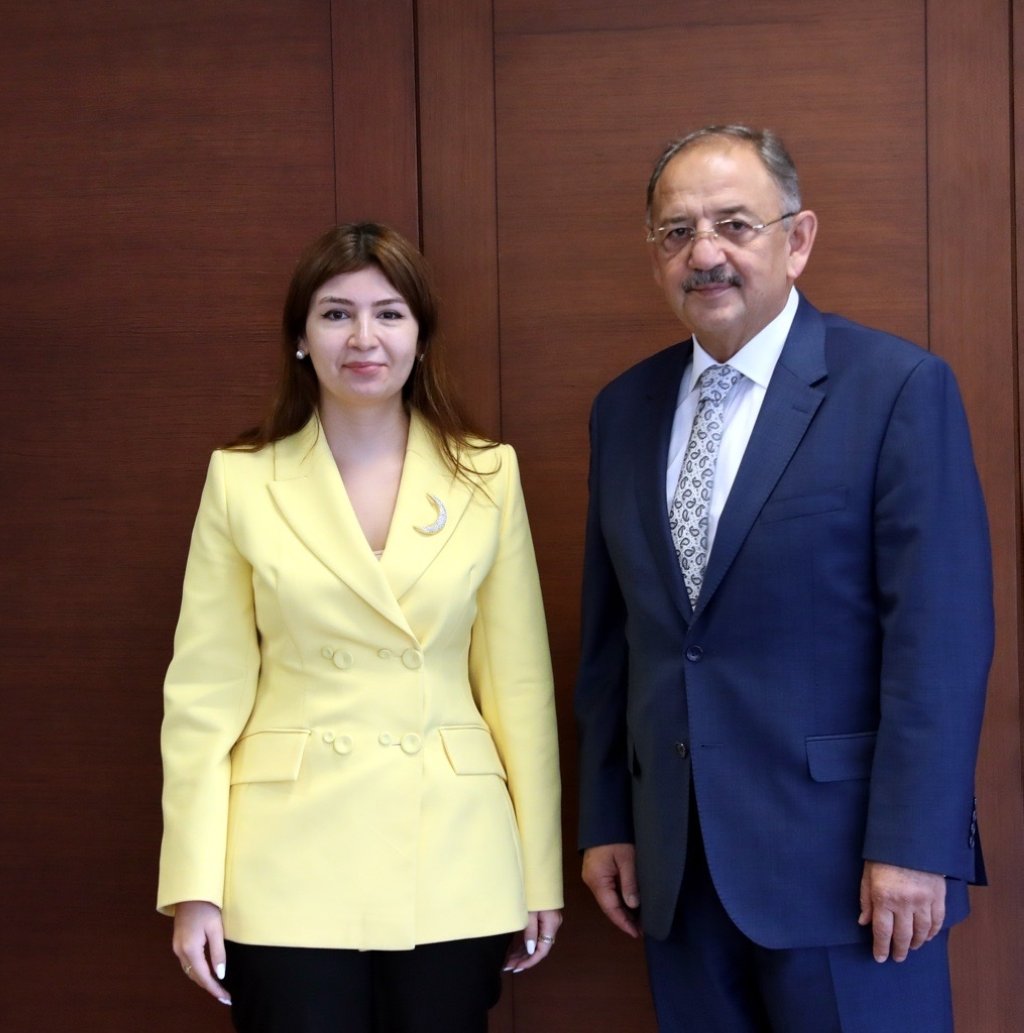© Turkuvaz Haberleşme ve Yayıncılık 2026
A road map is being devised for Istanbul to prepare the mega-city for an expected high-magnitude earthquake in the future, Environment, Urbanization and Climate Change Minister Mehmet Özhaseki said, as efforts to rebuild Türkiye’s southeastern provinces continue.
After a month of preparation, a road map will be submitted to President Recep Tayyip Erdoğan for the transformation of Istanbul, Özhaseki told Daily Sabah during a visit to Turkuvaz Media in the capital Ankara. "There will be a legislative framework as well as a special project to transform Istanbul."
"There may be no need to wait for the opening of Parliament for the earthquake law. We can call the Grand National Assembly of Türkiye extraordinarily in one or two months and pass a special law for the urban transformation," the minister underlined.
The city that last suffered heavy damage from earthquakes in 1999 is on edge in light of the repeated warnings by experts about the anticipated "big one," an earthquake with a magnitude of 7.0 or higher.
“Istanbul is one of the most risky metropolises in the world. There are 5.8 million independent entities in Istanbul that include houses and workplaces, 1.5 million of these are at risk. Almost one-fourth of Istanbul is at risk. In case of a 7.0 magnitude earthquake, 600,000 buildings would collapse, meaning that two buildings per street would fall down,” Özhaseki pointed out, indicating that this would also affect infrastructure and would hinder transportation.
“Many buildings will be built into reserve areas. The 600,000 risky buildings will be moved,” the minister said.
“Assistance will also be provided in on-site transformation. Before the election, we started a ‘Half of Us’ campaign to demolish and rebuild their buildings. Applications for 1.2 million independent housing entities were submitted, making up 90,000 buildings. Within the scope of that project, we will cover half of the costs. We will demolish and transport the riskiest buildings to the reserve areas, and if there are places lacking in terms of social needs, municipalities will take up the job.”
Within the scope of the transformation efforts, Özhaseki also said that he is in coordination and met with Istanbul Mayor Ekrem Imamoğlu, inviting the 39 mayors of the province’s districts to the ministry. “Work with them has been continuing in the past 15-20 days.”

On Feb. 6, two 7.7 and 7.6 magnitude quakes struck numerous Turkish provinces claiming over 50,000 lives. Around 14 million people in Türkiye were affected by the quakes as well as many thousands of others in northern Syria.
“Our primary agenda is the earthquake,” the minister emphasized.
“(Some) 680,000 houses are destroyed as well as 170,000 workplaces, storehouses, barns, haylofts and similar entities, making up 850,000 independent entities in total. It is being said that 11 provinces were hit by the earthquake, yet in fact, 18 provinces were affected and taken into the scope of earthquake recovery,” the minister said.
Özhaseki elaborated that both On-Site Transformation, as well as reserve housing areas, are an option for rebuilding the quake-hit provinces. Those advocating the choice of reserve areas argue that a similar earthquake could happen again in the same location while others point to the downsides of reserve areas as being too far away from the old city centers as well as from each other. Towns in reserve areas can be kilometers away from the other ones. Recently, a law was enacted to allow the usage of areas that lost their classification as forests however, only a limited figure is available.
Özhaseki said that the tender has been made for 182,000 houses in the reserve areas.
On the other side, people also prefer to rebuild their houses in the areas where they have memories and grew up, which is why many apply to the on-site project.
A massive influx of applications was received on the first day after the announcement of the On-Site Transformation Project, which was launched to provide grants and financial support to people who desire to reconstruct their structures in quake-ravaged areas.
The minister said that 150,000 people applied for the project. The highest number of applications are currently in Hatay with over 60,000.
Regarding the causes of why such a huge number of buildings collapsed during the quake, Özhaseki said that several buildings were built in a sloppy manner, were of low quality, lacking materials and according to engineering calculations of the 80s and 90s, and were on fault lines while most were built according to regulations that were in practice before 2000. Following the 1999 earthquake that rocked the Marmara region, a new regulation was put in place for buildings to be built resistant to earthquakes of a magnitude of 8.0.
Özhaseki highlighted that buildings will not be allowed to be built on fault lines or stream beds, where the ground is rotten. Engineering calculations and construction companies will have to strictly follow the regulation.
Erdoğan pledged a swift recovery after the twin earthquakes. According to the latest government assessments, the cost incurred by the earthquake to the country's economy is estimated to be a total of $104 billion (TL 2.74 trillion).
The president mentioned last month that all the debris had been removed. The construction of permanent housing in areas without earthquake risk was started swiftly. Erdoğan also said that Türkiye will gradually deliver the houses starting this fall and complete the construction of 319,000 houses within the first year after the earthquakes.
